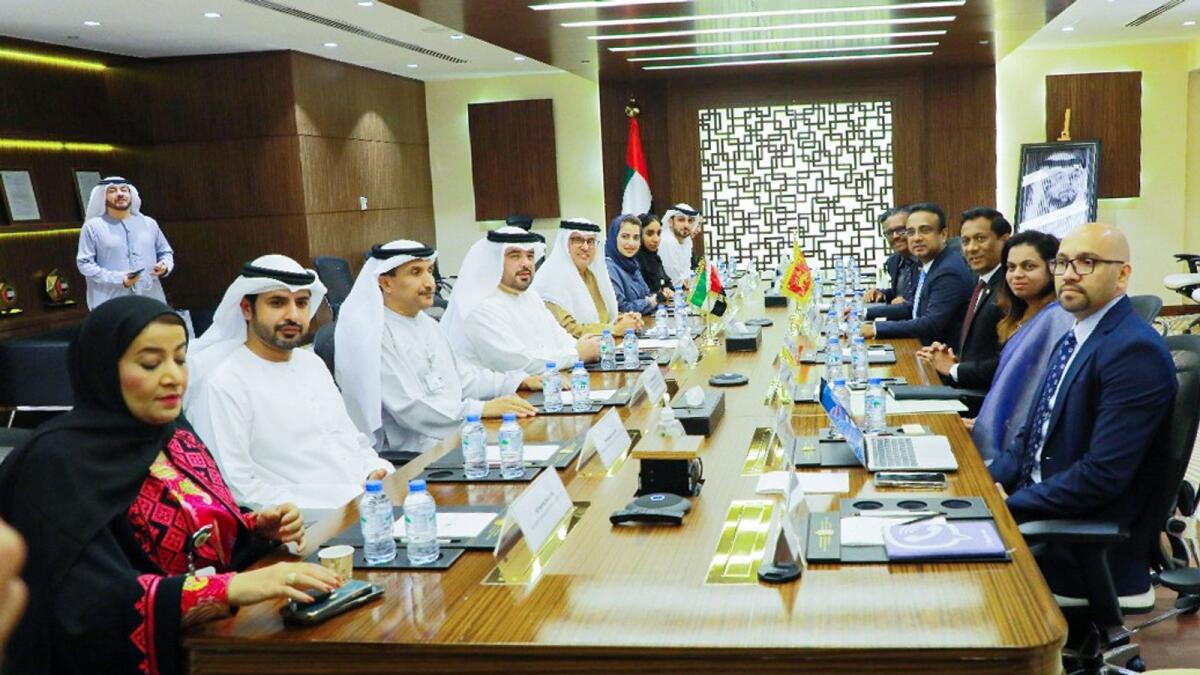UAE jobs: Sri Lanka seeks more opportunities for expats as crisis deepens back home, says minister
Country's labour ministry to create pool of skilled workers for job market

Sri Lanka is facing its worst economic crisis in its history. Food inflation and unemployment rates have soared, forex reserves have dried up and its currency has plunged against the dollar. The country is running out of money and is eyeing an immediate IMF bailout. Against all odds, the tiny island nation is striving hard to revive its debt-laden economy. The bankrupt government is looking at two elements that have always ensured steady capital inflow: tourism and foreign remittance.
Manusha Nanayakkara, Sri Lanka’s Minister for Labour and Foreign Employment, is hoping for more expats to find jobs in countries like the UAE and shore up foreign remittances.
“I am seven months into my job. I started visiting major labour-receiving countries in October. The UAE is a large market for us. There are more than 380,000 migrant workers here,” Nanayakkara told Khaleej Times in an interview held during his four-day official visit to the UAE.
Last year, a record 311,188 Sri Lankans left the nation seeking jobs abroad and a good 85 per cent flew into the Middle East. Remittances – a major source of foreign exchange, soared with migrant workers sending more than $475 million in December 2022, which was much higher than same period of 2021 but lower than pre-Covid-19 time.
With more than 35,000 Sri Lankan migrants coming to the UAE in 2022, some of them were reportedly found to be seeking jobs while on a visit visa and a few were forced into other illegal trades.
Nanayakkara met his counterpart Abdulrahman Abdulmannan Al Awar, Minister of Human Resources and Emiratisation, to discuss and resolve issues including human trafficking.

“Due to the current economic crisis, most Sri Lankans seek foreign employment opportunities in the Gulf region and there is a tendency for people to come on a visit to seek jobs. Through this, a lot of issues have been created and this to some extent has the potential to damage bilateral relationships. The main purpose of my meeting with Dr Abdulrahman was to find ways to resolve them while also seeking more job opportunities for Sri Lankan professionals and skilled workers.”
Nanayakkara is seeking more jobs for professionals in the areas of finance, healthcare, energy and information technology.
“We intend to do this through a skill verification and qualification equalisation certificate programme. Also, we have seen a lack of Sri Lankans working in the oil and gas industry and we seek more opportunities through a quota in the form of a government-to-government programme.”
Skilled jobseekers
To create a workforce with skill sets for the local and international job market, the ministry under the guidance of Nanayakkara has implemented several reforms.
“I have now embarked on a national-wide labour market intelligence programme through a labour market information system. This would give us more insights into labour supply and demand with the characteristics required for job markets. We will then communicate this with our education officials to ensure what is being produced can meet the expectations of both local and international jobs markets.”
In the past years, the economic woes were further hit with a drop in remittances, which was linked to transactions made through illegal channels.
Nanayakkara noted that channels popularly called as Hawala system have been noticed for more than a decade, but became rampant in the past two years. To counter this challenge, the government has initiated several steps, including 1,000 Sri Lankan rupees incentive to those sending home 20,000 rupees, launch of a mobile app ‘SL- Remit’ for remittance, and removal of interest caps for foreign currency deposits of licensed commercial banks and the National Savings Bank. A contributory pension scheme has been started and permits given to import electric cars for 50 per cent of the money remitted by the workers. Also, a dedicated entrance ‘Hope Gate’ has been opened at airports for migrant workers.
“We offered more benefits and incentives for migrant workers and their families which is higher than the last 20 years combined.”
UAE is a ‘true friend’

The UAE-Sri Lanka diplomatic relations were established in 1979 and were traditionally based on foreign employment. However, in the recent past the bilateral interests have expanded with new opportunities for collaboration in trade and investment.
“The UAE’s direct investments in Sri Lanka exceeded $19 million in 2020 and 2021, and bilateral trade amounted to $2.7 billion during the same period. The UAE is one of the leading sources of foreign direct investment in Sri Lanka and is one of the largest trading partners in the Middle East with a trade exchange representing more than half of Sri Lanka’s trade with the region.”
Nanayakkara underlined that the UAE has been a ‘true friend’ of Sri Lanka.
“Last year alone a total number of 6,867 families and around 35,000 individuals benefited from the distribution of dry rations, food packs, clothing, and other humanitarian aid, in different parts of Sri Lanka,” the minister said while hoping for continued assistance as Sri Lanka tries to turn the corner on an unprecedented crisis.
ALSO READ:

Ashwani Kumar
Ashwani Kumar is a versatile journalist who explores every beat in Abu Dhabi with an insatiable curiosity. He loves uncovering stories that are informative and help readers form their own opinions.





